AAC Assessment Corner by Vicki Clarke: Thinking Inside the Box for AAC Evaluations
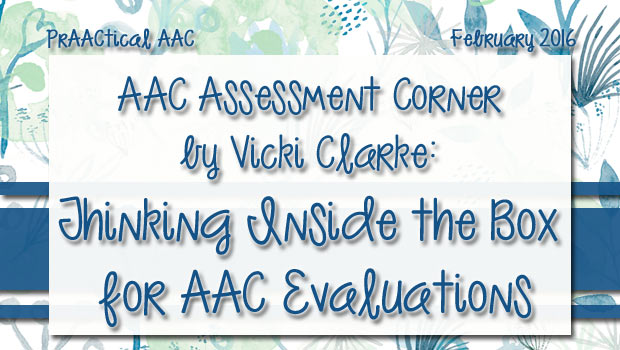
AAC assessment is a challenge in almost every service delivery setting, and many of you have reached out to us to ask for advice on how to strengthen your assessment practices. Luckily, Vicki Clarke, an AAC Chick who has a great deal of experience assessing learners in clinical and educational settings, has tips and resources to share. In this continuation of the AAC Assessment Corner series, Vicki talks about a key feature in any AAC system: vocabulary organization.
:::::::::::::::::::::::::::::::::::::::::::::::::::::::::::::::::::::::::::::::::::::::::::::
Thinking Inside the Box for AAC Evaluations: What Type of Vocabulary Organization is Right For Your AAC User?
Professionals often spend a great deal of time concerning themselves with which box they should get their AAC user. Should I pick a Prentke Romich or a Tobii Dynavox? But what about the iPad? And what about the money? Should I pick a CheapTalk or a GoTalk instead?
Here’s the good news: The box is not the issue! Whew! Let’s forget the communication box for a few minutes and focus on what’s inside to help us make our decision.
There are many features we consider when choosing AAC options for our students and patients, but one of the most important considerations is how the words and messages will be organized to meet their needs. Some of the more common ways of sorting messages include:
- Simple Pragmatic Organization (Functional Language)
- Grammatical and Noun Categorical Organization
- Context Based Messaging (Visual Scenes or Grids)
- Single Message Core Vocabulary
- Multi-Meaning Core Vocabulary
Many of the different speech generating devices and AAC apps lean heavily towards a specific type of organization, but most good systems have some of all of these. These 5 types of language representation systems all have research supporting their efficacy as tools to assist non-verbal communicators in developing and using language. The challenge is matching the patient’s specific skills and needs to the vocabulary system that best supports him.
Systems for people who have intact language and simply need AAC to compensate for a motor speech disorder are easy to figure out. These people can use almost anything, including simply spelling messages. They understand rote social messaging and creative message construction. They don’t need supports for language or social interactions. We typically need to just consider which systems increase their rate of communication with a minimal learning curve, are physically accessible, and appeal to the patient.
The vast majority of people with whom I work do not have intact language/communication skills, however. As I am considering which type of vocabulary organization best meets their needs, I also have to consider their social skills, attention, language skills, visual and auditory processing, and memory. In assessing social skills, I generally follow the premise that people are either socially focused or fact focused; big picture people or detail people; social butterflies or scientists. Many of the people with whom I work take these tendencies to extremes, with a hyper focus on socialization or items/objects and a concurrent lack of attention to the opposite. These tendencies impact how we choose a system for organizing their vocabulary.
What do these different types of patients look like?
Patient One: Object Focused Student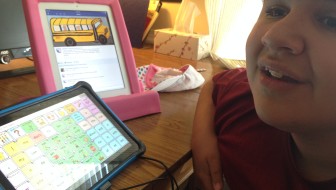
This student may start as a great requester, asking for snacks, movies or other motivating items, but doesn’t know how to comment, respond or greet. He may be very good at memorizing “I” + “want” + “Sesame Street” because this message results in a highly motivating, tangible outcome. His sequential memory may trump his language comprehension. We know that we will be teaching social skills at the same time as we are teaching communication. This student may need simplification of messages even if he can memorize sequences of symbols to request his favorite movie. When we first introduce a social message, he may not be intrinsically motivated to use these messages because they don’t result in a preferred activity.
Patient Two: Socially Motivated Student
This student is interested in interacting with you but may not deal with language at a symbolic level very well. He smiles at you, reaches for you, makes small sounds of agreement, but isn’t using symbolic language to communicate in a specific way. He greets you with gestures but has difficulty shifting his attention to his communication system to say, “How’s it going?” He doesn’t answer, “I’m great!” He knows what he wants to say but struggles with short term memory and symbol recognition so that he has difficulty constructing a message word by word and remembering the message he meant to say.
When we select a program or app for either of these patients, we need to make sure that they have access to supported social messaging in addition to the other types of vocabulary organization. Further assessment may tell us that he can use a core vocabulary system when motivated (object focused student with good sequential memory) or that she functions best with context based, phrase based messaging (social focused with good message selection). The main organization of the two systems may be decided based on these features (core or context based), but both students will need to have access to supports for social messaging, and the training to effectively use these messages.
So, which device, app or program do you select?
Patient One: Object Focused Student
People with good sequential memory may be candidates for a primarily core word based system. They have the ability to recall increasingly longer sequences of messages as they learn the meaning of the messages they build. They can learn to select “I” + “like” + “it” to get a smile and high five from their partner. When teaching these students, we have to remember to teach not only sequences of messages but also the meaning behind these messages. We are teaching the value of social interaction at the same time as we are teaching sentence construction. We may have to simplify his access to social messages with single button selections to say an entire message, “that’s cool” or “that stinks” so that he can focus on the interaction and learning the meaning of the message rather than concentrating on building the message. Alternatively, we may want to accept single word messages for social interactions even though he is capable of producing longer messages to allow him to learn the social meaning of the single symbols he selects (ex: “like” instead of “I like it! That’s awesome!”). These students require minimal modification of their core word based systems. I find we most often are moving toward systems like Unity on Accent devices, the LAMP app, Speak For Yourself app, AVAZ app, WordPower on a NovaChats or Core First on T-Series devices (T10, T7, T15), among others.
Patient Two: Socially Motivated Student
People with good social skills who struggle with symbolic representation of these messages and short term memory for sentence construction may be candidates for context based messaging. He may be great at attending to his partner by smiling, reaching and nodding but struggles with using symbolic language to interact. This student will need to have social language which is complex, specific and easy to access. Phrase based organization allows the social butterfly to quickly access full messages to communicate a wide variety of comments, questions and requests without stressing his short term memory and attention skills. I find that these patients are often not content to use single words to communicate their complex social messages, and yet their short term memory doesn’t allow them to effectively construct messages to match their intent. Detailed intervention planning and system modification typically needs to occur to provide these students with messages that match their specific environments. For these communicators we often select systems with a heavy emphasis on context based communication such as Tobii Dynavox T-Series devices with Compass (Master Page Set, NavBar Pageset) and the Autismate App.
I created a decision tree I use to help me think through the type of vocabulary organization that I will focus on for a particular patient. This helps me choose a device that provides a little of all the types of organization I believe my patient needs but also reminds me to include the other options which will help him in the future.
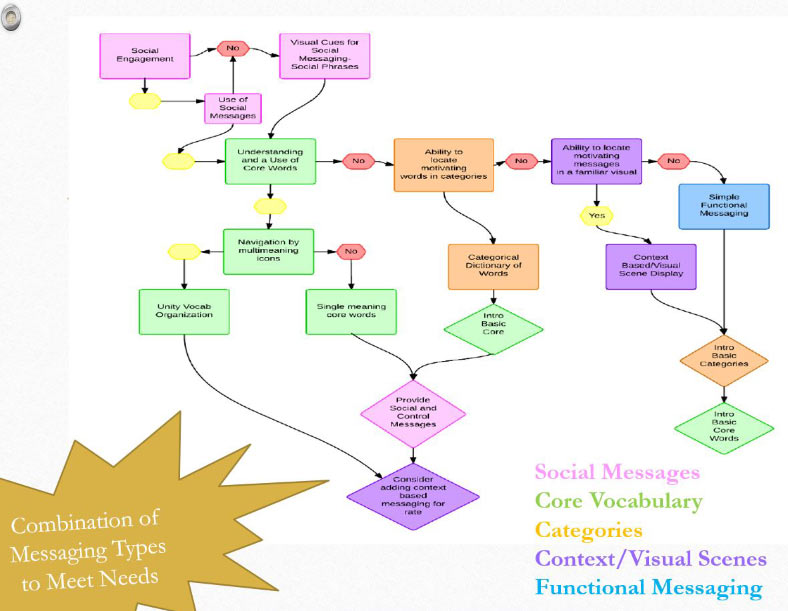
Here’s a grid of a few popular high tech speech generating devices and some of their features to help you consider which system will accommodate your AAC user’s messaging needs. (You can download the full versions of the matrix and flowchart using the link at the end of the post)
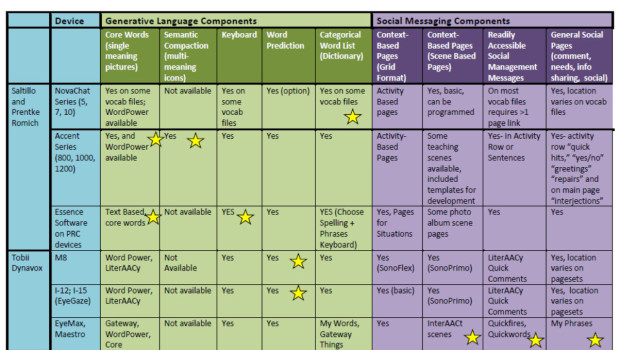
The short takeaway of this article is that there is no one vocabulary system that works for everyone. As with all aspects of supporting the varied needs of our AAC users, we have to consider individual strengths and needs and match our tools and teaching to these individual differences. The good news? Most high quality apps and devices have a little of all of these types of vocabulary organization, so as long as you choose a high quality, comprehensive system, you can adapt it to meet the needs of most of your patients!
::::::::::::::::::::::::::::::::::::::::::::::::::::::::::::::::::::::::::::::::::::
You can download Vicki’s flowchart and table here.
Filed under: Featured Posts, PrAACtical Thinking
Tagged With: assessment, feature match, language organization
This post was written by Carole Zangari

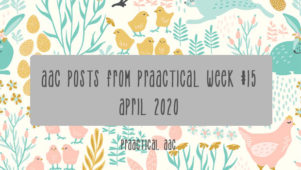
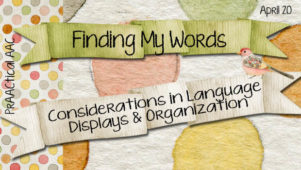
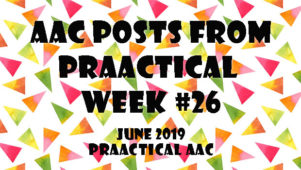
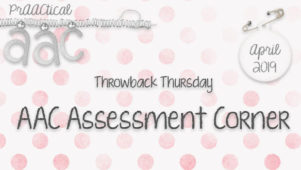
3 Comments
Wonderful article! I have a question regarding language comprehension. I am an aide for a student with autism, not an slp, but enjoy learning about AAC. The student I work with is still in the process of trialing different devices and is on his third device (he’s used words for life, an older version of proloquo2go, and now a novachat with word power 108). While he primarily requests items, he will occasionally comment and will respond to questions, but not usually initiate. However, he seems to have a good understanding of language and can use multiple meanings of words and generates his own phrases (he will only use canned phrases like I want, go home, etc. if prompted to do so). He can rephrase if asked, learns new words in two or three tries, will teach himself new words, corrects himself if he makes an error, and has learned each device quickly (as in making simple sentences the first time he’s used it). It often seems like his vocabulary is limited because he does not know where a word is located, not that he does not have a message. He is diagnosed only with autism. I was wondering where a student like this fits best into these types of communicators. I spend most of my day modeling for him and am always looking for more clues into his abilities. Based on this obviously limited information, what would you think about this student?
Hi! It’s hard to recommend a specific system since I don’t know your friend personally BUT it seems you are in the right track! You have a great understanding of how he interacts so now I would suggest looking through the chart to see if there is a system you haven’t tried yet that you might consider. Everyone responds differently to the systems so your trials will be very helpful as you figure out what’s best! Good luck!
Great post. I truly appreciate these insights!